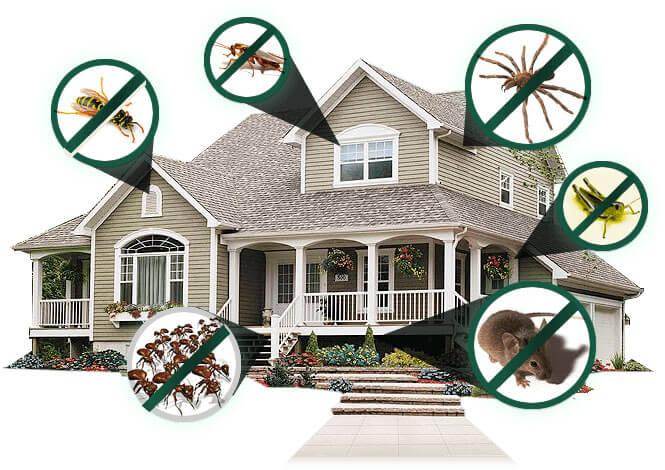Reliable A1 Bed Bug Treatment in Charlotte - Safe and Proven Techniques
Bed Insect Therapy Break Down: Contrasting Chemical Vs. Non-Chemical Solutions
In the world of bug control, specifically when dealing with the persistent concern of bed bugs, the option in between chemical and non-chemical treatment solutions can be a crucial one. Both techniques use distinctive advantages and disadvantages, influencing variables such as efficiency, safety and security factors to consider, and total price. By analyzing the nuanced details of each approach, a more clear understanding of which path to go after in addressing a bed pest invasion can be attained.
Effectiveness of Chemical Treatments
Chemical treatments for bed insect problems have actually been widely acknowledged for their powerful and quick efficiency in eradicating these insects. When considering the performance of chemical treatments, it is important to understand that they can supply a thorough and quick remedy to a bed insect trouble. Specialist pest control operators typically depend on insecticides to target bed pests at numerous phases of their life cycle, including adults, fairies, and eggs. These chemicals normally work by disrupting the bed pests' worried system, causing paralysis and eventual fatality.
Additionally, chemical therapies have the benefit of using recurring results, meaning that they can proceed to eliminate bed insects even after the preliminary application. This residual activity is especially advantageous in combating any potential re-infestations. Additionally, the quick action of chemical therapies can bring alleviation to people facing serious bed bug infestations, enabling them to gain back control of their space promptly.
Safety And Security Interest In Chemical Solutions
One important aspect that requires cautious consideration when utilizing chemical solutions for bed insect therapy is ensuring the safety of occupants and the atmosphere. Exposure to certain chemicals used in bed insect therapies can lead to respiratory system problems, skin irritability, or other negative responses, especially in people with pre-existing problems or level of sensitivities.
Furthermore, the ecological impact of chemical services is another significant factor to consider. Some chemicals used in bed pest therapies may be dangerous to valuable insects, wildlife, and environments if they leach into the soil or water systems. It is necessary to use chemical therapies deliberately, following security standards, and considering less toxic options to alleviate these threats and guarantee the efficient and secure management of bed insect problems.
Advantages of Non-Chemical Methods
Considering the possible safety and security worries and ecological impact associated with chemical remedies for bed insect therapy, exploring non-chemical approaches offers a promising alternative with several distinctive benefits. Non-chemical approaches use a more secure choice for households, particularly those with children, people, find more or pets delicate to rough chemicals. These strategies remove the threats of direct exposure to harmful substances, reducing the possibility for damaging health and wellness effects. Additionally, non-chemical therapies are ecologically friendly, as they do not contribute to air or water air pollution, making them a sustainable option for pest control.
Furthermore, non-chemical remedies can be reliable in targeting bed pests, including hard-to-reach areas where chemical therapies might not penetrate - A1 charlotte pest control companies. Approaches such as heat treatment, vacuuming, vapor cleaning, and bed mattress encasements provide extensive elimination without the use of unsafe chemicals.
Limitations of Non-Chemical Treatments

Furthermore, non-chemical treatments frequently call for several applications to achieve successful eradication. This can be lengthy and might not constantly assure full removal of all bed bugs and their eggs, specifically in surprise or hard-to-reach locations.
Moreover, the success of non-chemical treatments heavily counts on correct implementation and thoroughness, which can be testing for people without professional knowledge. Inadequate application of non-chemical approaches may cause incomplete elimination, bring about relentless problems and the demand for additional therapies.
For that reason, while non-chemical therapies have their advantages, it is necessary to recognize these restrictions and consider them when determining the most efficient strategy for managing bed insect problems.
Expense Contrast: Chemical Vs. Non-Chemical Options
Provided the limitations linked with non-chemical treatments, an important facet to review in the context of bed bug administration is the price contrast between chemical and non-chemical alternatives. In comparison, non-chemical therapies like heat treatment or More about the author heavy steam can be more costly, with prices varying from $1,000 to $6,000 this contact form for an entire home. While the preliminary price of chemical therapies might seem reduced, several therapies might be required to totally remove the infestation, potentially boosting the overall expense.
Final Thought

Taking into consideration the possible safety and security worries and environmental impact linked with chemical remedies for bed pest therapy, checking out non-chemical approaches provides an appealing choice with a number of distinct advantages.Provided the constraints connected with non-chemical treatments, an important aspect to examine in the context of bed bug management is the expense comparison in between chemical and non-chemical choices. In comparison, non-chemical therapies like heat therapy or heavy steam can be much more costly, with costs ranging from $1,000 to $6,000 for an entire home. While the preliminary expense of chemical treatments might appear lower, several therapies might be called for to fully eliminate the infestation, possibly enhancing the overall expense.In conclusion, when contrasting chemical and non-chemical bed bug therapy options, it is essential to think about performance, safety, benefits, constraints, and price.